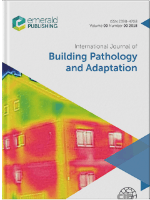
International Journal of Building Pathology and Adaptation
Scope & Guideline
Transforming insights into impactful building solutions.
Introduction
Aims and Scopes
- Building Pathology and Maintenance:
Research on identifying, diagnosing, and managing defects in buildings and infrastructure, including methodologies for proactive maintenance. - Sustainable Construction Practices:
Exploration of eco-friendly construction techniques and materials, reflecting on energy efficiency, lifecycle assessment, and the integration of renewable resources. - Adaptive Reuse and Heritage Management:
Studies on the preservation, rehabilitation, and adaptive reuse of historical buildings, focusing on maintaining cultural significance while enhancing functionality. - Technological Innovations in Construction:
Investigation of emerging technologies such as Building Information Modeling (BIM), artificial intelligence, and smart materials to improve construction processes and project management. - Climate Change and Environmental Impact:
Assessment of how climate change affects building performance and resilience, along with strategies for adaptation and mitigation. - Stakeholder Engagement and Project Management:
Examination of stakeholder dynamics, project management frameworks, and the implications of governance in construction projects.
Trending and Emerging
- Net Zero Carbon Buildings:
An increasing number of publications are focusing on strategies and practices aimed at achieving net-zero carbon emissions in building design and construction, which is critical for combating climate change. - Energy Efficiency and Retrofitting:
Research on energy retrofitting techniques and their effectiveness in improving existing buildings' energy performance is gaining traction, highlighting the importance of sustainable renovations. - Circular Economy in Construction:
Emerging studies are exploring the principles of the circular economy, emphasizing waste reduction, material reuse, and sustainable resource management in the construction sector. - Indoor Environmental Quality (IEQ):
A growing focus on the impact of indoor environmental quality on occupant health and well-being indicates a shift towards more human-centered design approaches. - Technological Integration in Construction Management:
The adoption of advanced technologies, such as AI and machine learning for project management and safety assessments, is becoming a significant area of interest in current research. - Community Engagement and Social Aspects of Building Adaptation:
Increased attention is being paid to the social dimensions of building adaptation, including community involvement in decision-making processes and the implications for public health and safety.
Declining or Waning
- Traditional Construction Methods:
There is a noticeable decline in studies focused solely on conventional construction techniques, as the industry increasingly embraces modern, sustainable practices. - Generalized Building Codes and Regulations:
Research on generic building codes is becoming less frequent, likely due to a shift towards more localized and context-specific regulations that address unique environmental and cultural needs. - Basic Material Science without Sustainability Context:
Papers concentrating solely on material properties without linking them to sustainability or environmental impact are less common, as the journal prioritizes research that integrates these aspects. - Historical Construction Practices:
Studies on historical construction techniques without a clear connection to contemporary applications or sustainability are diminishing, reflecting a trend towards relevance in current practices.
Similar Journals
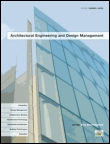
Architectural Engineering and Design Management
Shaping the future of architecture with innovative management strategies.Architectural Engineering and Design Management, published by Taylor & Francis Ltd, is a leading journal dedicated to the interdisciplinary fields of architectural engineering and design management. Since its inception in 2005, the journal has established itself as an essential resource for researchers and practitioners, showcasing the latest developments and innovative practices within the architecture and construction industries. With a commendable impact factor reflected in its Q1 ranking in Architecture and high standings across building and construction, it addresses critical themes such as sustainable design, integrated construction processes, and management strategies that drive efficiency and creativity in evolving architectural contexts. Researchers will find the journal's commitment to disseminating high-quality research—evidenced by its impressive Scopus rankings, including a #13 ranking in Architecture—particularly valuable as it fosters a deeper understanding and advancement in the profession. The journal is accessible in print and online, ensuring that academic and professional communities stay at the forefront of architectural engineering innovation.
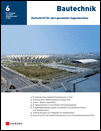
Bautechnik
Advancing construction knowledge for a sustainable future.Bautechnik is a premier academic journal in the fields of Building and Construction and Civil and Structural Engineering, published by ERNST & SOHN in Germany. With a history dating back to 1969 and a significant converged timeline through various years, this journal offers a rich repository of peer-reviewed research dedicated to advancing the principles, methodologies, and innovations within its domains. Bautechnik is currently ranked in the Q3 category for both building and construction, as well as civil and structural engineering, indicating its relevance and contribution to the academic community. Though it does not offer open access, its curated content is accessible to a global audience of researchers, professionals, and students striving for excellence in their fields. The journal aims to foster discussions and disseminate knowledge that impacts the future of construction, architecture, and engineering practices.
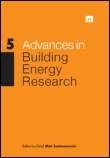
Advances in Building Energy Research
Pioneering Sustainable Practices in the Construction SectorAdvances in Building Energy Research is a pivotal journal dedicated to the scholarly exploration of energy efficiency and sustainable practices within the building and construction sector. Published by Taylor & Francis Ltd from the United Kingdom, this journal provides a rich platform for researchers, industry professionals, and students interested in the latest advancements and methodologies that drive energy conservation in architecture and engineering. With an impressive 2023 Scopus ranking of #64 out of 223 in the Building and Construction category and a notable Q2 category quartile, the journal occupies a significant position in its field, emphasizing high-quality, peer-reviewed research that meets the needs of a global audience. Though it operates under a subscription model, its contributions are invaluable for advancing knowledge that addresses the urgent challenges of energy consumption and sustainability in built environments. Spanning research published from 2007 to 2024, this journal continues to be an essential resource for those seeking innovative solutions and insights into building energy performance.
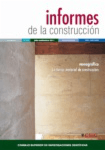
Informes de la Construccion
Elevating discourse in architecture and engineering since 1957.Informes de la Construccion, an esteemed journal published by CONSEJO SUPERIOR INVESTIGACIONES CIENTIFICAS-CSIC, serves as a vital platform for disseminating scholarly research in the fields of Architecture, Building and Construction, and Civil Engineering. With an impact factor that reflects its impact within the community, this open access journal has been promoting scientific discourse since 1957, making its comprehensive archive freely available to researchers, professionals, and students alike. The journal maintains a diverse scope, covering significant advancements in construction techniques, sustainable practices, and innovative designs that respond to contemporary challenges in built environments. Currently ranked in the Q2 category for Architecture and positioned within the top quartiles for multiple engineering disciplines, Informes de la Construccion is recognized for its contribution to the engineering scholarship landscape, offering insights that are crucial for overcoming the complexities in modern construction and environmental engineering. Based in Madrid, Spain, the journal encourages contributions that explore both theoretical and practical aspects of construction, fostering an inclusive community dedicated to the advancement of knowledge in this pivotal field.
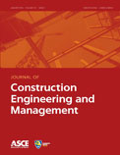
JOURNAL OF CONSTRUCTION ENGINEERING AND MANAGEMENT
Innovating Management Solutions for Modern ConstructionJournal of Construction Engineering and Management, published by the American Society of Civil Engineers (ASCE), is a premier scholarly journal dedicated to advancing the field of construction engineering and management. With an ISSN of 0733-9364 and an E-ISSN of 1943-7862, this respected journal boasts a noteworthy impact factor and is categorized in the Q1 quartile across significant fields such as Building and Construction, Civil and Structural Engineering, and Strategy and Management. Covering a broad spectrum of topics relevant to professionals, researchers, and students from its inception in 1982 through 2024, the journal emphasizes innovative research and practical applications that are vital to the construction industry. While it is not an open-access journal, it provides essential insights into the evolving dynamics of construction management, regulatory changes, and technological advancements, making it an indispensable resource for anyone looking to stay at the forefront of their field.
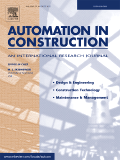
AUTOMATION IN CONSTRUCTION
Advancing Automation for a Smarter, Greener Construction LandscapeAUTOMATION IN CONSTRUCTION is a premier academic journal published by Elsevier, dedicated to advancing the fields of Building and Construction, Civil and Structural Engineering, and Control and Systems Engineering. Since its inception in 1992, this journal has served as a vital platform for disseminating innovative research and practical applications in automation technologies within the construction industry. With a distinguished 2023 impact factor reflected in its Q1 ranking across multiple engineering categories—securing rank #3 in Civil and Structural Engineering and rank #3 in Building and Construction—AUTOMATION IN CONSTRUCTION stands out as a leading resource for researchers, professionals, and students keen on staying at the forefront of this rapidly evolving field. The journal offers access to cutting-edge studies that explore automation processes, methodologies, and tools, contributing to the enhancement of productivity and sustainability in construction practices. With contributions from global experts, each issue of AUTOMATION IN CONSTRUCTION provides comprehensive insights that help drive innovation and foster collaboration.
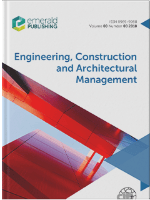
Engineering Construction and Architectural Management
Pioneering Research at the Intersection of Design and ConstructionEngineering Construction and Architectural Management is a prestigious journal published by Emerald Group Publishing Ltd, dedicated to advancing knowledge and practice at the intersection of engineering, architecture, and construction management. With an ISSN of 0969-9988 and an E-ISSN of 1365-232X, this journal fosters a scholarly environment for researchers, professionals, and students to explore innovative methodologies and developments within the field. Operating without Open Access, it has maintained a strong reputation since its inception in 1994, with a converged publication timeline extending to 2024. The journal proudly boasts a Q1 ranking in four critical categories for 2023, including Architecture and Building and Construction, highlighting its role as a leading source for groundbreaking research. Additionally, with impressive Scopus Rankings—such as #5 in Architecture (97th percentile) and #28 in Building and Construction (87th percentile)—it underscores its dedication to excellence in scholarly contributions. By addressing key challenges and emerging trends in the industry, Engineering Construction and Architectural Management serves as an essential resource for those striving to shape the future of engineering and architectural practices.

Frontiers in Built Environment
Fostering collaboration for resilient built environments.Frontiers in Built Environment, published by FRONTIERS MEDIA SA, is a highly regarded open-access journal that has established itself as a significant platform for cutting-edge research in the fields of building and construction, geography, planning and development, and urban studies. Since its inception in 2015, this journal has embraced a commitment to disseminating high-quality, peer-reviewed research, allowing researchers, professionals, and students to access pivotal findings and insights without financial barriers. With an impressive 2023 impact factor, it ranks in the Q1 tier for Urban Studies and is positioned within the Q2 tier for both Building and Construction and Geography, Planning and Development, demonstrating its influence and relevance in evolving urban and environmental challenges. Its rigorous indexing, exemplified by a strong Scopus ranking, reflects its contribution to the advancement of knowledge in these critical areas. With a clear dedication to fostering innovation and collaboration within the built environment sector, Frontiers in Built Environment is essential reading for those engaged in shaping sustainable urban futures.

International Journal of Built Environment and Sustainability
Empowering Researchers to Build a Sustainable FutureInternational Journal of Built Environment and Sustainability, published by PENERBIT UTM PRESS, serves as a pivotal platform for the dissemination of research in the fields of architecture, urban planning, and sustainable development. With an E-ISSN of 2289-8948 and having embraced Open Access since 2014, this journal ensures that critical findings in built environment research are accessible to a global audience, fostering innovation and collaboration among researchers, professionals, and students. Although the H-index and specific scope are currently not detailed, the journal's commitment to advancing sustainable practices in the built environment makes it an invaluable resource for those dedicated to tackling the pressing challenges of sustainability in our communities. As part of its mission, the journal prioritizes high-quality, peer-reviewed articles that contribute to both academic theory and practical applications, solidifying its role in shaping the future of our built environments.

Developments in the Built Environment
Pioneering insights into architecture and engineering advancements.Developments in the Built Environment, published by ELSEVIER, is a premier open-access journal dedicated to advancing knowledge across multiple facets of the built environment, including architecture, building and construction, civil and structural engineering, and computer-aided design. Since its inception in 2020, this journal has established an impressive Q1 ranking across various categories, reflecting its commitment to high-quality peer-reviewed research and its influential presence in the field, as evidenced by its strong Scopus rankings, such as Rank #7 in Engineering - Architecture. With an open-access model, it ensures that groundbreaking research is accessible to all, supporting the dissemination of innovative ideas and practices within the global community. Researchers, professionals, and students are encouraged to contribute to the discourse on sustainable design and technology, making this journal an essential resource for anyone engaged in the future of built environments.